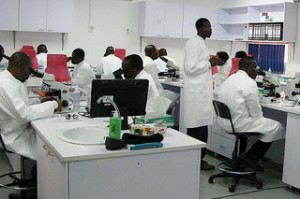 A new study indicates that over one third of all medicines for malaria tested in sub-Saharan Africa and Southeast Asia were faulty or fake. The study says the subpar drugs could help the parasites become harder to try to eradicate.
A new study indicates that over one third of all medicines for malaria tested in sub-Saharan Africa and Southeast Asia were faulty or fake. The study says the subpar drugs could help the parasites become harder to try to eradicate.
Drugs intended to fight malaria are enticing to counterfeiters because they offer high profits, little punishment if caught, and many countries that have problems with outbreaks of malaria lack laboratories that are sufficiently equipped to test the drugs to see if they are legitimate.
Faulty or subpar drugs could put the efforts made over the last ten years in eradicating malaria in jeopardy, as parasites become more resistant, survive and then breed to make the problem even worse. Close to 1.2 million people die each year from malaria, which takes its toll the heaviest on children in huge sections of Southeast Asia and Africa.
Over one third of the malaria medicines did not meet the chemical testing standards in the studies. Close to one third were declared fake since they did not contain any of the necessary drugs and others had fraudulent packaging.
There were others, while not deemed fake, that were faulty because of bad manufacturing or storage. The findings, said researchers should be considered a warning to authorities to clamp down on the number of counterfeit and fake drugs. Without laws that are international to prosecute counterfeiters that cross borders, the problem will continue.
